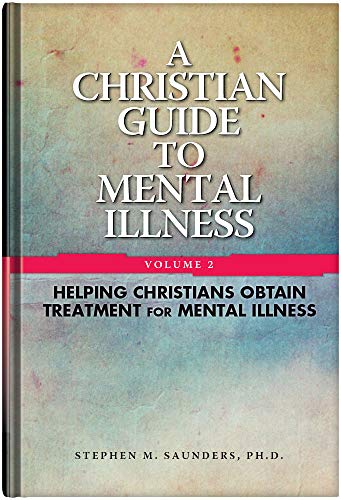Stephen M. Saunders
Milwaukee: Northwestern Publishing House, 2019. 597 pages. Hardcover. $49.99.

Reviewed by Joel G. Koepp on 09/18/2019
In this second volume, Dr. Saunders treats the topics from how to approach one you may think has a mental illness who is not being treated, through the areas of how and when to make referrals. The first volume covered the basics of mental illness; its various definitions and the role of the church in care and support for the suffering and their families.[1] Where the first volume looked more at specific mental health illnesses, this second volume is aimed at understanding the mental health field. The aim of this book is to be a resource for pastors and teachers to help families and individuals make good informed choices in the area of mental health.
The book is divided into five parts. Part one is a history of the treatment of mental illness from antiquity to modern day, including discussions on scientific inquiry, psychiatry, psychology, and social work. Part two is an overview of the mental health system; its history, professionals, ethics, professional standards, and how mental health services are paid. Part three breaks down the diagnosis and treatment process. Part four discusses various causes of mental illness from biological, psychological, and environmental factors. While all the parts are good in their own right, part five is invaluable. Part five covers issues of how to have helpful conversations, potential burdens that face families and caregivers, how to make referrals, and how to be good resources for mental health as pastors, teachers, churches, and schools.
There is a lot of information to process, and this book may be better understood as a reference book. There are good examples and illustrations used; however, note that the flow of the work is sometimes disrupted by the illustrations being placed in various text-boxes.
In the vast field of mental health, these works by Saunders bear an important Lutheran distinction. While he notes a “link between spiritual and emotional well being” (169), he also states their distinguishing features: “The preaching of Christ crucified is the assurance of salvation, which makes many people feel better. But whether they feel better or not, the sins of the faithful are forgiven.” (169) He also points out the dangers of the theology of glory, and how it is “particularly cruel to those persons with mental illness.” (552) To this end, the role of the pastor is not only important, but it is precious, unique and vital to those with mental illness. Saunders confesses, “Proper care for mental illness and mental health concerns is provided by mental health professionals, whereas spiritual comfort and consolation is the duty of pastors and of the church.” (521) If pastors, the church, and mental health professionals work within their vocations, it is good, right, and salutary. Saunders concludes, “It is my firm belief that a proper Christian attitude toward mental illness entails acknowledging one’s sin and being firm in the faith of one’s salvation. These are the things that the church can provide, which mental health professionals cannot. At the same time, mental health professions are able to provide those things needed that the church cannot.” (570). These two volumes are highly worth every pastor’s time.
[1] For more on volume 1, see Gary Zieroth’s online review of A Christian Guide to Mental Illness, Volume 1: Recognizing Mental Illness in the Church and School, https://www.ctsfw.edu/resources/concordia-theological-quarterly/book-reviews/a-christian-guide-to-mental-illness-volume-1-recognizing-mental-illness-in-the-church-and-school, accessed July 26, 2019.



